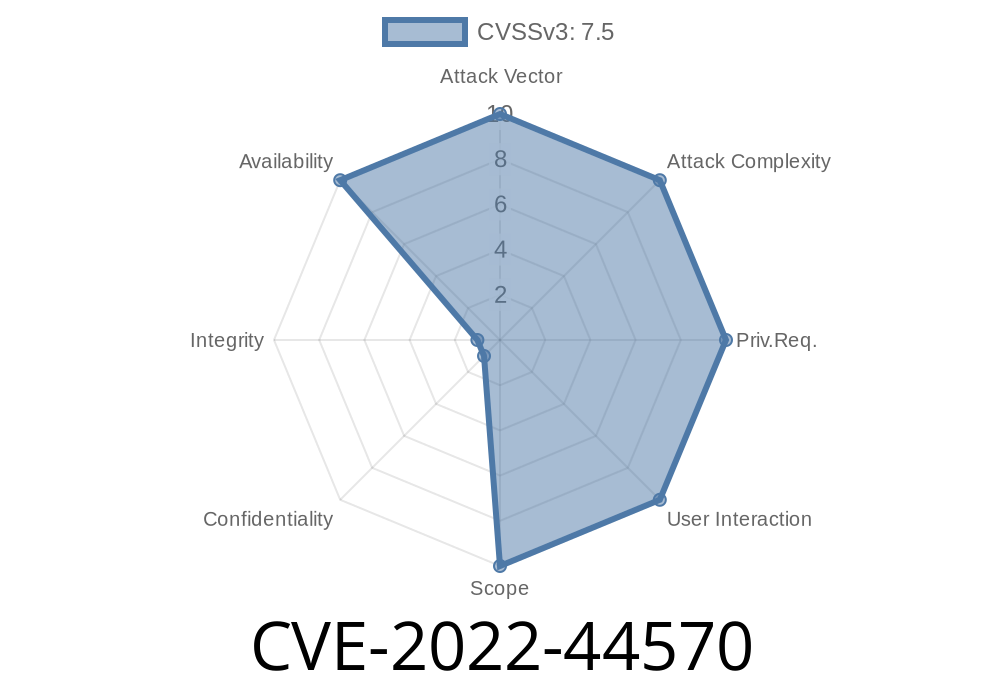CVE-2022-44570, a recently identified vulnerability, affects the Range header parsing component in Rack (versions >= 1.5.). If exploited, this vulnerability can potentially be used as the foundation for a denial of service (DoS) attack, particularly against those applications dealing with Range requests, such as streaming applications or those that serve files.
This long-read post will delve into the details of this vulnerability, provide a code snippet to illustrate the issue, and highlight original references to help you better understand the repercussions of this vulnerability and protect your applications from potential attacks.
Exploit Details
At its core, the vulnerability is a result of inefficient processing of carefully crafted input in the Range header parsing component in Rack. This input causes the component to take longer than expected to process the request, which can ultimately lead to a denial of service attack. By inundating the affected component with such requests, an attacker could cause the application to become unresponsive, thereby impacting its availability.
Code Snippet
Consider the following code snippet from the range.rb file in Rack, which is responsible for parsing Range requests:
def self.parse_range_header(env)
header = env['HTTP_RANGE'].to_s
return nil unless /^bytes=(\d*-\d*(?:,\s*\d*-\d*)*)/ =~ header
$1.split(/,\s*/).map { |range_spec|
start_byte, end_byte = range_spec.split('-')
return nil if start_byte.empty? && end_byte.empty?
if start_byte.empty?
bytes = end_byte.to_i
else
start_byte = start_byte.to_i
end_byte = (end_byte.nil? || end_byte.empty?) ? nil : end_byte.to_i
bytes = end_byte ? end_byte - start_byte + 1 : nil
end
}
end
This code snippet could be subject to a DoS attack by sending a maliciously crafted HTTP_RANGE header. For example:
bytes=1-10000,2-10000,3-10000,...
When sending such a header, the processing time might increase significantly due to the repetitive Range requests, potentially leading to a DoS attack.
Mitigation
It is crucial to update Rack to a version that resolves this vulnerability. As of now, the Rack maintainers have not yet released an official fix for this issue. It is advisable to keep an eye on the official Rack repository (https://github.com/rack/rack) for updates and to apply a patch once it becomes available.
In the meantime, it could be helpful to implement input validation checks or other security measures on the application level to filter out malicious Range requests before they reach the vulnerable component.
Original References
1. The initial vulnerability report can be found on the GitHub Security Advisory page: https://github.com/rack/rack/security/advisories/GHSA-7v46-5hqh-w7f9
2. The official repository for the Rack project on GitHub provides more insights into the codebase and may offer future updates on this vulnerability: https://github.com/rack/rack
Conclusion
CVE-2022-44570 reveals a critical vulnerability in Rack's Range header parsing component, which could lead to a potential denial of service attack. It is essential to be aware of this issue and take necessary precautions, such as updating to a non-vulnerable version, implementing input validation checks, and staying informed through the official Rack repository or similar resources. By staying informed and proactive, you can keep your applications protected from the impacts of this vulnerability.
Timeline
Published on: 02/09/2023 20:15:00 UTC
Last modified on: 02/17/2023 16:33:00 UTC
